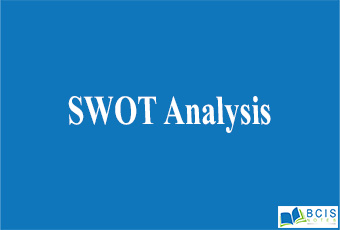
Swot Analysis
SWOT (strengths, weaknesses, opportunities, and threats) analysis is a framework used to evaluate a company’s competitive position and to develop strategic planning. It assesses internal and external factors, as well as current and future potential. Strengths and weaknesses are internal to your company—things that you have some control over and can change. Examples include who is on your team, your patents and intellectual property, and your location. It is a framework for identifying and analyzing the internal and external factors that can have an impact on the viability of a project, product, place or person. SWOT analysis is most commonly used by business entities, but it is also used by nonprofit organizations and, to a lesser degree, individuals for personal assessment. Additionally, it can be used to assess initiatives, products or projects. The framework is credited to Albert Humphrey, who tested the approach in the 1960s and 1970s at the Stanford Research Institute. Developed for business and based on data from Fortune 500 companies, it has been adopted by organizations of all types as an aid to making decisions.
Elements of a SWOT analysis
As its name states, a SWOT analysis examines four elements:
Strengths: Strengths are things that your organization does particularly well, or in a way that distinguishes you from your competitors. Think about the advantages your organization has over other organizations. These might be the motivation of your staff, access to certain materials, or a strong set of manufacturing processes. Internal attributes and resources that support a successful outcome.
Weaknesses: Weaknesses, like strengths, are inherent features of your organization, so focus on your people, resources, systems, and procedures. Think about what you could improve, and the sorts of practices you should avoid. Internal attributes and resources that work against a successful outcome.
Opportunities: They usually arise from situations outside your organization, and require an eye to what might happen in the future. They might arise as developments in the market you serve, or in the technology you use. Being able to spot and exploit opportunities can make a huge difference to your organization’s ability to compete and take the lead in your market. External factors that the entity can capitalize on or use to its advantage.
Threats: Threats include anything that can negatively affect your business from the outside, such as supply chain problems, shifts in market requirements, or a shortage of recruits. It’s vital to anticipate threats and to take action against them before you become a victim of them and your growth stalls. External factors that could jeopardize the entity’s success.
you may also like Tools to Aid Strategic Planning

Leave a Reply